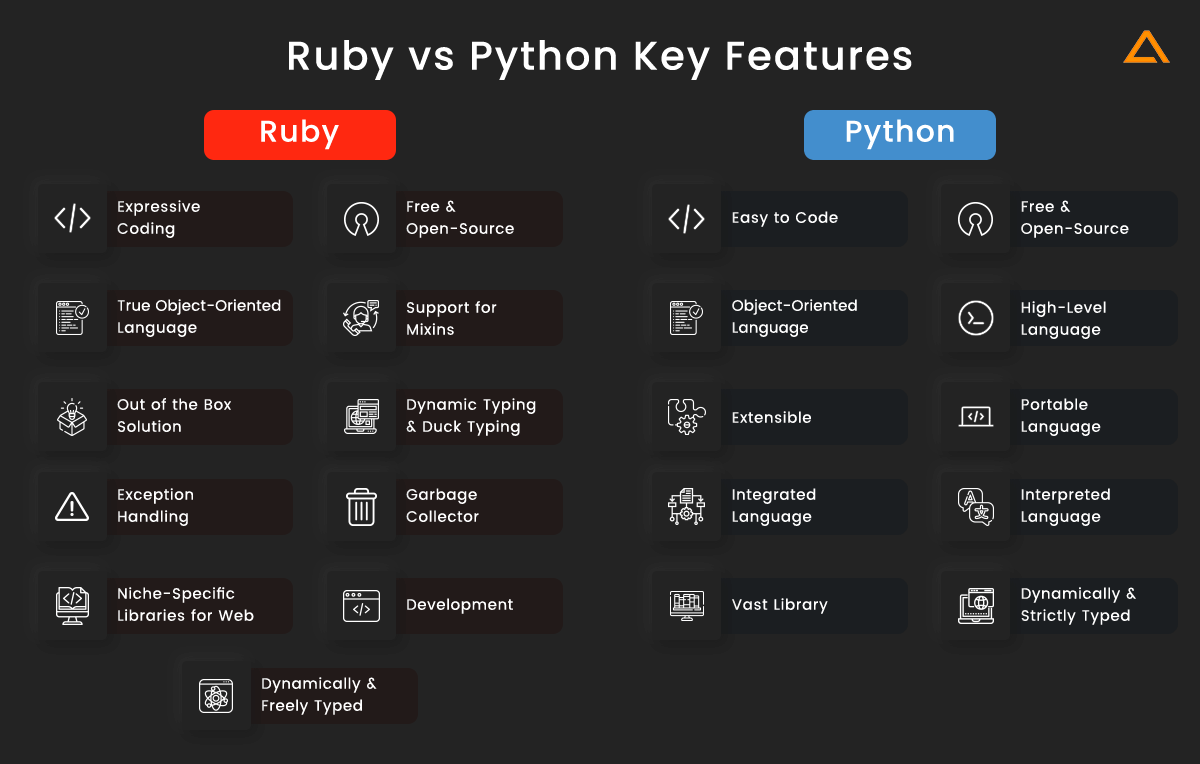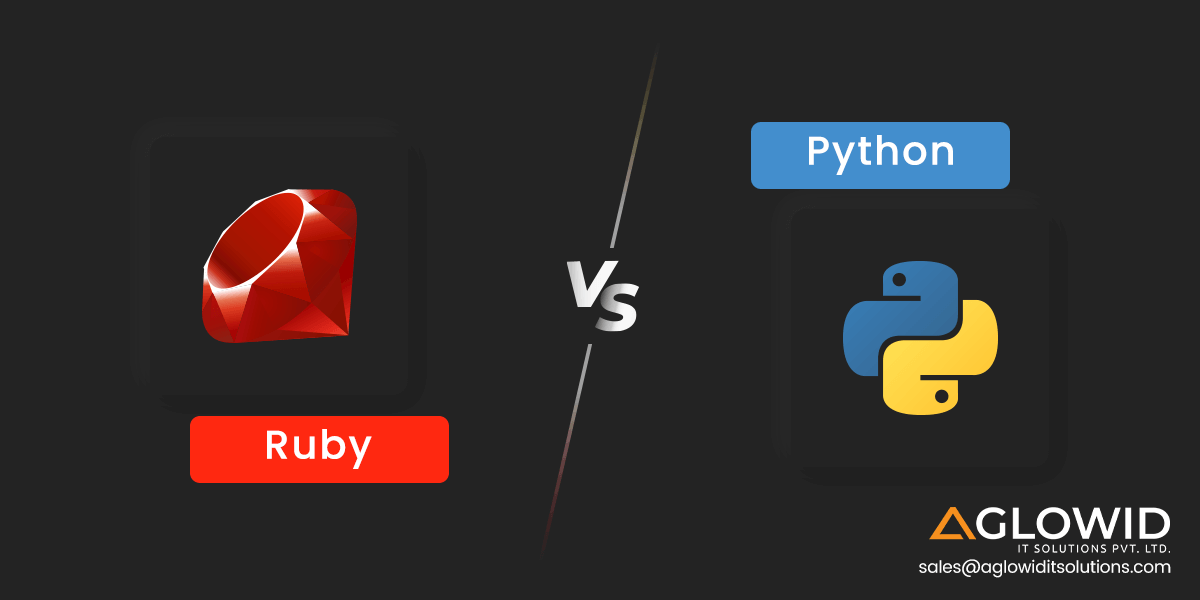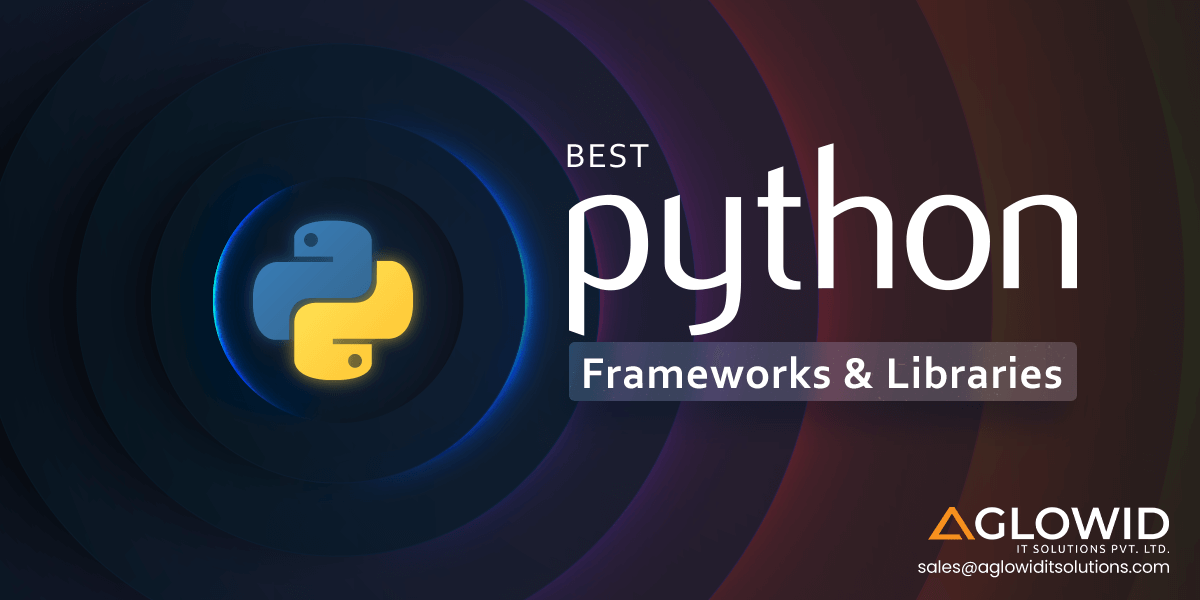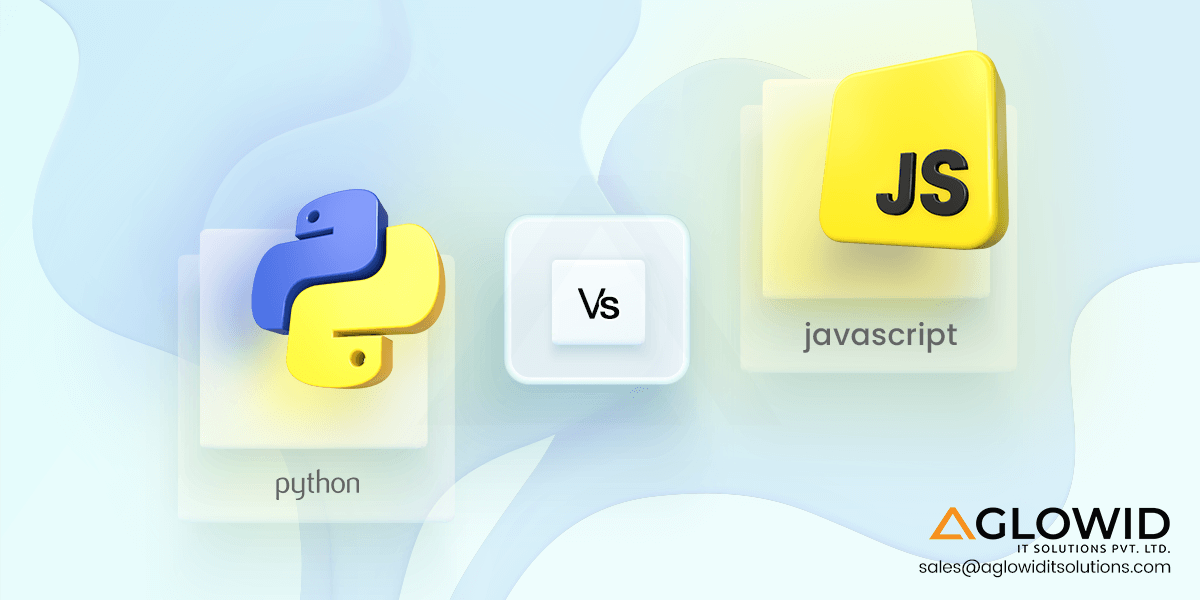Quick Summary:
Confused whether Ruby or Python is the best choice for your requirements? In this Ruby vs Python ultimate guide, we will address all your queries, doubts and misconceptions about the capabilities and limitations of both these programming languages.
Which is better – Ruby or Python? Before we start with the comparison of ‘Ruby vs Python’, you should know that both Ruby and Python are general-purposed programming languages. This means there is almost nothing that a developer cannot develop using any of these languages. So choosing Python to Ruby or Ruby to Python will not give you an edge over the other. Hence, the playing grounds are levelled. Having said this, there are some core specialization or focus areas that developers and communities of both these programming languages have specialized in over the years. So the more fitting question to ask is – Ruby vs Python – Which is more suitable for my requirements?
Why Ruby and Python are so popular?
It is important to understand the core reasons behind the unparalleled popularity of both Ruby and Python that are winning the hearts of developers and businesses alike, making this comparison all so important. What is so great about Ruby and Python that makes them two of the most used/preferred programming languages globally? Well, for understanding this, we need to understand the Ruby and Python similarities.
Similarities between Ruby and Python
- Ruby is available under the OSI license and Python under the FSF license; hence, developers do not need to pay licensing fee for using and distributing any software built with them.
- Both Ruby and Python’s programs do not need to be interpreted, as they are high-level scripting languages.
- They support OOP (Object-Oriented Programming) out of the box.
- Ruby and Python both support cross-platform development, increasing its reach as it can be made available for Windows and Linux users.
- Objects in both languages are dynamically and strongly typed.
Ruby vs Python Introduction
What is Ruby?
Ruby is a pure object-oriented, general-purpose programming language. It is a dynamically typed open-source language with a commendable community behind it. The core philosophy of Ruby is to write codes for humans first, computers second. This approach makes the Ruby code resemble verbal language more than a machine-based one, giving Ruby immense popularity amongst beginners and Skilled Ruby Developers. Ruby’s popularity is also widely accredited to Ruby on Rails, a solid and robust framework built on MVC architecture. It comes with many in-built libraries and built-in functionalities, so developers do not have to develop anything from scratch.
What is Python?
Python is a popular general-purpose programming language with the same potential as Ruby, only with a slightly different focus area. Apart from being a preferred web app development language, it also is a preferred language used by scientists for data science requirements. Python has an impressive collection of statistical libraries for data science, which is a trending career path these days. Python’s core philosophy is to make everything visible to the developer. If there are any errors or faults in the program, or it needs to be debugged, the developer should quickly find the problematic areas without wasting any time, making the overall programming more efficient. Python’s most popular and widely used framework is Django, and it also follows MVC architecture like Ruby on Rails.
Also Check – Django vs Ruby On Rails
Ruby vs Python Key Features
After understanding what Ruby and Python are briefly, it is best to understand the key features before comparing Ruby programming language vs Python programming language.
| Ruby | Python |
| Expressive Coding | Easy to Code |
| Free and Open-Source | Free and Open-Source |
| True Object-Oriented Language | Object-Oriented Language |
| Support for Mixins | High-Level Language |
| Out of the Box Solution | Extensible |
| Dynamic Typing & Duck Typing | Portable Language |
| Exception Handling | Integrated Language |
| Garbage Collector | Interpreted Language |
| Niche-Specific Libraries for Web Development | Vast Library |
| Dynamically and Freely Typed | Dynamically and Strictly Typed |

Ruby vs Python Popularity Battle
Python is much more popular as compared to Ruby. Ruby initially started gaining popularity back in 2005, introducing the Ruby of Rails framework. The community around the Rails framework has been very active and made Ruby on Rails a preferred choice for web development amongst many developers across the globe. However, if we talk about the diversity of applications, Python is still leaps and bounds ahead of Ruby. This is also why Ruby’s popularity is slowly declining, whereas Python is rising in data science and academic applications.
Google Trends Comparison – Ruby vs Python

| GitHub Comparison – Python vs Ruby | ||
| Python | Ruby | |
| Star | 41.6k | 18.7k |
| Forks | 21.1k | 5.6k |
| Contributors | 1718 | 426 |
NPM Trends Comparison – Python vs Ruby

StackOverflow Survey Comparison between Python and Ruby
Ruby vs Python Performance Battle
Comparing performance is one of the most important factors for deciding between Ruby and Python as the preferred programming language for your requirements. However, comparing performance is no cakewalk, especially when you are trying to establish a fair and accurate estimation. Remember, a programming language can demonstrate weak performance in one aspect or solve one task and be extremely efficient in another. The common perception is that Python is faster than Ruby.
Here are some of the common Ruby vs Python performance tests to give us a better idea –
Test Factor 1 – The ‘for’ loop test
‘For’ loops are one of the most used functions used to repeat a specific code block a set number of times. For instance, if you want to check the grades of every student in class, you need to loop from 1 to the total number of students in that class.
Here we test the raw speed of the interpreters in Python and Java and also understand their looping structure –
Ruby Code
Input :
t = Time.now.to_f
for i in 1…1000000
puts i
end
puts "Elapsed time: ", Time.now.to_f - t
Python Code
Input:
import time
t = time.time()
for i in range(1, 1000000):
print(i)
print("Elapsed time: ", time.time() - t)
Output: Print all values between 1 and 999,999 and give an idea of the estimated time it took to complete the task.
After comparing and running the ‘for’ loop code test a couple of times, here are the results –
| Programming Language | Ruby | Python |
| Average Execution Time | 69.49673 seconds | 45.61045 seconds |
Test Factor 2 – Recursion and Subroutines
Recursion is when a function calls itself directly or indirectly and its corresponding function is known as a recursive function. It is an important function that makes the entire process easier and significantly reduces code compiling time. Both Ruby and Python provide recursions and subroutines functions. For comparing Ruby vs Python performance in this aspect, we can compare the scripts in both languages that find the 40th number in the Fibonacci sequence.
Ruby Code:
Input:
def fibonacci(i)
if i < 2
return i
else
return fibonacci(i-2) + fibonacci(i-1)
end
end
t = Time.now.to_f
puts fibonacci(40)
puts "Elapsed time: ", Time.now.to_f – t
Python Code
Input:
import time
def fibonacci(i):
if i < 2:
return i
else:
return fibonacci(i-2) + fibonacci(i-1)
t = time.time()
print(fibonacci(40))
print("Elapsed time: ", time.time() - t)
Output: Printed out the 40th Fibonacci number with time estimation.
| Programming Language | Ruby | Python |
| Average Execution Time | 15.60163 seconds | 54.91850 seconds |
In conclusion, Python is notably faster than Ruby when it comes to raw speed with around 50% margin victory in the ‘for’ loop test whereas Ruby is a clear winner against Python when it comes to recursion test. Overall, depending on your project requirements, and task dependencies, both Ruby and Python are neck to neck in terms of performance comparison.
Difference between Ruby and Python Core Philosophies and Motivation
Both Ruby and Python came around in the mid-90s. Though Python had a 4-year head start on Ruby, they both came around the time where the programmers community needed a reliable general-purpose programming language to meet their requirements. The core philosophies laid down by Ruby and Python are significantly different. Though they share many similarities in terms of being object-oriented, dynamic and all-purpose programming languages, they both offer many different functionalities. Here are some of the Ruby vs Python core differences in their philosophies
Core Philosophies Difference #1 – Freedom vs Strictness
When it comes to the basics of coding, certain developers prefer the liberty of playing around or having different options of executing the same task, command or function, whereas others prefer a single laid out best method of executing the task that works most efficiently.
Ruby follows a more freedom-oriented approach to coding where it believes in providing more than one way of doing the same thing. Though this shows flexibility in terms of coding capabilities, this also creates many difficulties, like making the Ruby program harder to debug. It also creates conflicts and confusion in a collaborative environment where developers might have different approaches to solve the same task.
On the other hand, Python believes in a stricter, more opinionated and straightforward approach where it provides one most understandable way of doing a particular thing and provides no alternatives. Some developers may find this restricting in nature, but the same restriction makes Python programs easier to debug, detecting errors, and favourable for collaborative efforts.
Core Philosophies Difference #2 – Out of the box vs Extensible Approach
Who doesn’t like an out-of-the-box standalone solution for their requirements? Ruby provides exactly that. Ruby comes with many out-of-the-box solutions for web development and other such requirements. As opposed to this, Python was designed to be more extensible with third-party modules. This helped make Python a more compact solution that made it easier to be used as a means of adding programmable interfaces into existing apps or legacy software.
While Python’s core philosophies can add many extra steps in getting the most basic task done, costing professional Python developers a little speed, it prioritizes code clarity, which saves a lot of back-and-forth time in the later stages of development. Also, the time-consuming tasks can anyway be outsourced to any third-party modules that can handle them better and faster. Overall, Ruby is like a one-man show, whereas Python is more about collaborative efforts with external modules.
Core Philosophies Difference #3 – Human Factor vs Code Clarity
When it comes to comparing the programming languages, Ruby is built with the intention of it being infinitely flexible and empowering for the developers. This gives Ruby developers or Ruby aspirants a lot of freedom for experimenting with different tricks to make an elegant web framework. It also makes the lines of code more verbal and readable than machine-oriented codes written in other programming languages like Python that are not as easy to comprehend.
In contrast, Python takes a more direct approach with a primary goal to make everything visible to the programmer. Though this takes away the creative freedom that Ruby developers enjoy, it makes Python code that much easier to learn and solve debugging issues efficiently.
A basic function in Ruby requires a lesser line of codes and looks pretty straightforward as compared to how you’d execute the same function in Python. Let’s have a look –
Project – Create a program that gets time two months from this very second.
Ruby Solution –
Require ‘active_support/all’
new_time = 2.month.from_nowPython Solution –
from datetime import datetime
from dateutil.relativedelta import relativedelta
new_time = datetime.now() + relativedelta (months=2)Ruby’s line of codes looks much neater and easier to execute, whereas Python seems a little cumbersome and thorough. If you notice, Python requires you to import specific functions from datetime and dateutil libraries as Python follows explicit coding practices. Though this adds a line or two of coding, it’s at times better than Ruby as the developer knows where every data point is coming from as opposed to Ruby, where it all seems magical, and the actual work happens behind the curtains away from developers sight.
Ruby vs Python for Web Development
Ruby’s Ruby on Rails and Python’s Django are hot favourites for developers and clients across the globe to create scalable, dynamic and impressive web apps. Their performance is comparable and neck-to-neck as both Ruby and Python have also interpreted scripting languages. They both follow MVC architecture and provide traditional models, controllers, views and database migrations.
If we have to make a slight comparison between the two, Django follows an MVT architecture rather than MVC, which essentially means that Django follows a Model, View, Template architecture, which is nothing more than a small twist on the MVC model. Django takes care of the routing, and the ‘Template’ handles the user interface entirely, whereas view is used to execute the business logic, interact with a model and render templates. Still, Ruby’s Rail framework is way more widely used and popular as compared to Django when it comes to website and web app development. If you want a comprehensive solution with services like web scraping and more, Django is a better alternative.
Ruby Rails vs Python Django – Popular Websites and Website Count

| Websites Built with… | |
| Ruby on Rails | Python’s Django |
| GitHub | Spotify |
| Shopify | BitBucket |
| Airbnb | YouTube |
| Total Website Count | |
| 437,855 | 90,853 |
Ruby vs Python Community and Development Approach
| Important Community Platforms for Ruby and Python | |
| Ruby | Python |
| Reddit>>Ruby on Rails | Reddit>>Python |
| StackOverFlow>>Ruby on Rails | Reddit>>Python Forum |
| Ruby-Forum.com | StackOverFlow>>Python |
| PythonAnywhere Forums | |
| Python Forum | |
| Source.Python Forums | |
| Go Rails>> Forum | |
Both Ruby and Python have an active, enthusiastic and talented pool of contributors and community that makes learning Ruby or learning Python much easier. It also helps expert developers to rely on the community forums to solve the queries that they get stuck on. However, when it comes to the overall approach and behaviour of the community, Python and Ruby differ in how frequently they update the programming language and what they focus mainly on.
With Ruby, developers get the freedom of creative coding, followed by frequent and more updates. As opposed to this, Python’s community prefers stability to change, keeps the code conservative and is easy to understand with fewer updates. From a beginner’s point of view, learning Python is much easier as it is less prone to changes and less likely to run into problems due to too many updates as opposed to Ruby.
Ruby vs Python – Coding Differences
No Ruby Python comparison is complete without understanding the minute yet important differences between their coding properties and syntaxes. Here are some of the most important differences you will experience when coding in Ruby vs coding in Python.
| Pointer | Ruby | Python |
| Objects and Primitive Data Types | Everything is an Object | Has both – Primitive Data and Objects |
| Multiple Inheritance and Minx | Supported, can be used | Not Supported, cannot be used |
| Else Syntax | elsif | elif |
| Switch Case Support | Available | Not Available |
| Mainly Utilizes | Methods | Functions |
| Import Type | Generic | Specific |
| Iterators | Not important | Very important |
| Outer Scope | Read and Write Access | Values cannot be changed |
| Coding Libraries | Limited compared to Python | Vast Library |
| Unsetting a variable | Once set, it can’t be unset | Present in the Symbol Table as long as it remains in scope |
| Anonymous Functions | Supports lambdas, blocks, procs | Supports only lambdas |
| Lambda Functions | A vaster range of Lambda functions supported | Support for Single Line Lambda functions |
| Switch/Case Statement | Supported | Not Supported |
| Built-in-classes | Can be modified | It can’t be modified |
| Inheritance | Single Inheritance | Multiple Inheritance |
| Namespace Collision | Not that efficient, create frequent Namespace conflicts | Requires developers to give each file its own namespace, avoiding namespace collision |
When to use Python over Ruby and Ruby over Python?
Now that we understand the pros and cons, scope and limitations of both Ruby and Python, you should be able to make a decision on which programming language is best suited for your specific project requirements. Here is a quick checklist of applications where using Python and Ruby are most suitable and preferred.
Choose Python over Ruby for…
- Blockchain Applications
- Game App Development
- Command-Line Applications
- Audio and Video Applications
- System Administration Applications
- Machine Learning Applications
- Enterprise Applications
Choose Ruby over Python for…
- Static Websites
- Command Line Media Player
- Automation, Backup and DevOps Tools
- Parsing, Data Cleaning and Filtering
- Report Generators
have a unique app Idea?
Hire Certified Developers To Build Robust Feature, Rich App And Websites
Also Check:




